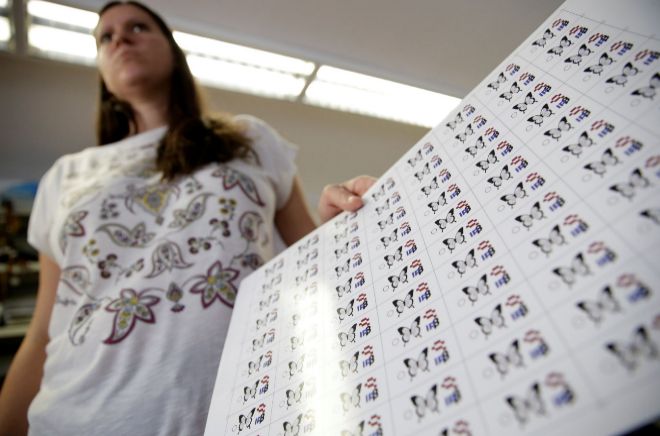The latest in anti-counterfeit technology is the tiny scales that give the butterflies their striking colors. These unique microscopic structures are the key to shielding credit cards, keys, documents or even works of art.
The secret of these scales has been discovered by researchers at the Belgrade Institute of Physics , who have developed Teslagram technology, capable of revolutionizing the anti-counterfeiting industry with these biological structures.
Each scale, about one hundred micrometers long, about 30 wide and about two high, is like a fingerprint for having unique reliefs, different from each other and nano-sized. And there is no technology that can make a copy of them.
"These scales have shapes that make them unique to each of them. They are so small that it is not possible to copy them . And, these are 3D structures, such as small 3D holograms, which are unique and impossible to copy," says the doctor in physicist Marija Mitrovic Dankulov, director of the Center of Innovations of the Institute of Physics.
Another advantage is that few butterflies can protect a very large number of objects . "In a butterfly there are between 100,000 and 200,000 scales. One of these scales is enough to protect an object," says Mitrovic Dankulov.
These tiny scales are removed from the wings of the butterflies after their natural death so that they remain whole to be applied in what they want to protect.
The way in which this scale adheres securely is different in various materials, and is still a challenge for scientists.
For now, Teslagram has been developed to protect credit cards, or keys of both a hotel room or a car, as well as a nuclear power plant or agency where sensitive data is stored, or other facilities of great importance to a State .
You can also protect objects of art because its tiny size does not change the appearance of a painting or sculpture, but it is a guarantee to a museum against any attempt to falsify its works. The scope of this technology is wide, and in the future it would protect even paper money, different fashion brands of wristwatches, glasses, clothing, and even medicines.
Anti-counterfeit scales
A large number of types of butterflies are suitable for use in Teslagram technology.
It all started in 2010 with the investigation of the colors of the butterflies, which gave the clue about the discovery of the power of scales in the fight against counterfeiting.
The iridescent colors of the wings are not due to a pigment but are the effect of the interaction of the light with the nanostructures of the scales, and change depending on the angle of the eye. That is precisely why they represent an unrepeatable natural hologram.
The scientists of the Serbian Institute proved with statistical analysis that there are no two equal scales.
"The complexity in a scale is such that even a part of the scale would be enough to protect an object," says physics doctor Dimitrije Stepanenko, a scientist at the Institute of Physics.
Stepanenko explains that no protection element currently used is as effective as a butterfly scale. "If someone discovers how to print a certain hologram on paper money, they can make many 100-euro bills. If they discover how to copy a scale, we think it is impossible, but imagine the situation, they can only fake one ticket, because for another Scale is different and then I should work again from the beginning, "illustrates the safety of this technology.
Tribute to Tesla
He said that in the case of banknotes, the scale would work well in combination with other existing protection systems, but in objects such as a key it may be the only and complete protection.
In the near future, possibly in less than a year, the first commercial customers for the security system based on the keys protected by Teslagram technology are expected.
The Teslagram reader who recognizes the object protected by the scale has also been developed by that group of researchers, who have registered the patent and the trademark.
About 30 researchers, physicists, biologists, mechanical engineers and programmers have worked on the development of technology, called Teslagram in honor of the great Serbian-born American scientist Nikola Tesla.
The added "gram" comes by analogy with highly developed and widely used elements for protection, such as holograms or kinegrams.
According to the criteria of The Trust Project
Know more- Science and Health
- science
Science Japan gives the green light to the experiment of a team of scientists to create human-animal hybrids
Interview Lewis Dartnell, astrobiologist: "The Earth made man and now it is the other way around"
Science and Health The danger of moisturizers for breast milk

